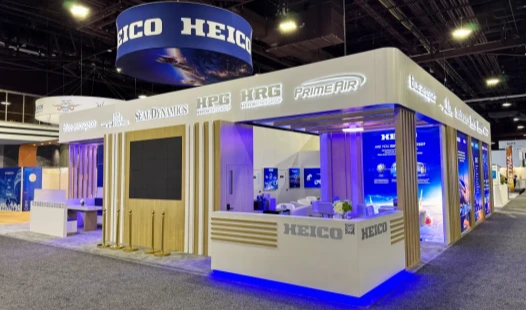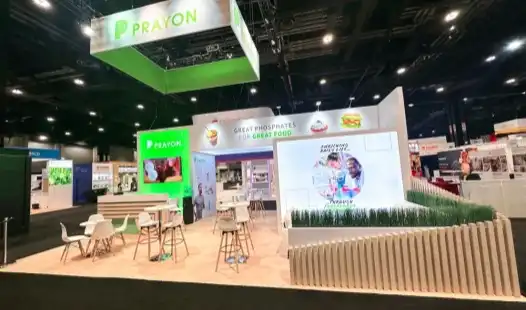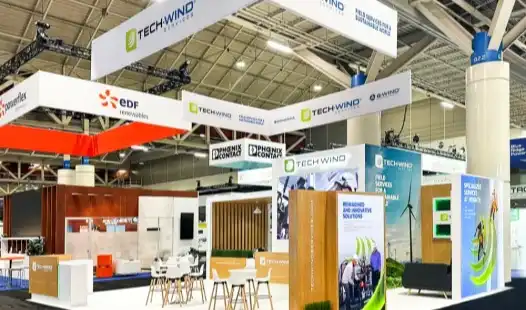Why Booth Design Is Key to a Successful Trade Show Strategy?
Booth design plays a pivotal role in a fruitful exchange appearance technique, serving as the visual cornerstone of your brand's presence. A well-designed booth captures attention, communicates your message viably, and makes a vital experience for visitors. It's not just about aesthetics; it's about deliberately creating a space that aligns with your marketing goals, showcases your products or administrations, and facilitates significant intuition with potential clients. An imaginative booth design can set you apart from competitors, enhance brand recall, and ultimately drive better ROI from your exchange show speculation. By prioritizing booth design, you're investing in an effective device that can essentially affect your general exchange appearance success.
The Impact of First Impressions: How Booth Design Influences Visitor Engagement?
In the bustling environment of an exchange show, your booth is often the first point of contact between your brand and potential clients. The design of your show space can make or break these vital first impressions. A well-conceived booth design does more than just look great; it deliberately draws visitors in and encourages them to investigate what you have to offer.
Consider the psychology behind successful booth design. Colors, lighting, and layout all play significant parts in how attendees see your brand. Warm, inviting colors can create an inviting atmosphere, while bold, contrasting tints can make your booth stand out from the swarm. Proper lighting not only lights up your items but also sets the disposition and directs attention to key areas of your display.
The layout of your booth is equally important. An open, intuitive flow encourages visitors to move through your space naturally, exploring different areas without feeling cramped or overwhelmed. Strategic placement of product displays, interactive elements, and conversation areas can guide visitors on a journey through your brand story.
Incorporating Interactive Elements for Enhanced Engagement
Modern booth design goes beyond static displays. Incorporating interactive elements can significantly boost visitor engagement and memorability. Touch screens, virtual reality experiences, or hands-on product demonstrations can provide immersive experiences that leave lasting impressions. These interactive features not only entertain but also educate visitors about your offerings in a more engaging manner than traditional methods.
Remember, the goal is to create an environment that not only attracts visitors but also keeps them engaged long enough to make meaningful connections. A well-designed booth that incorporates these elements can turn casual passersby into interested leads, setting the stage for successful business relationships.
Aligning Booth Design with Brand Identity and Marketing Goals
Your trade show booth is a three-dimensional representation of your brand. It's crucial that every aspect of your booth design aligns seamlessly with your brand identity and overarching marketing objectives. This alignment ensures consistency in your messaging and reinforces brand recognition among trade show attendees.
Start by considering your brand's core values and unique selling propositions. How can these be translated into visual elements? For instance, if sustainability is a key part of your brand identity, incorporate eco-friendly materials or showcase your green initiatives within your booth design. If innovation is your hallmark, consider a cutting-edge, tech-forward booth design that reflects this ethos.
Color schemes, typography, and graphic elements used in your booth should mirror those in your other marketing materials. This visual consistency helps in building a cohesive brand image across all touchpoints. Moreover, the overall aesthetic of your booth should resonate with your target audience. A booth design for a tech startup would likely differ significantly from one for a luxury fashion brand.
Tailoring Design to Specific Marketing Objectives
Beyond brand alignment, your booth design should be tailored to support specific marketing goals for the trade show. Are you launching a new product? Your booth design should prominently feature this product and perhaps include a dedicated demo area. If your goal is to gather leads, ensure your design incorporates spaces for one-on-one conversations and easy methods for collecting contact information.
Consider how your booth design can facilitate the customer journey. From attracting attention to nurturing interest and encouraging action, each element of your design should work towards moving visitors through this journey. Strategic placement of information, product displays, and call-to-action elements can guide visitors towards your desired outcomes, whether that's signing up for a demo, making a purchase, or scheduling a follow-up meeting.
Maximizing ROI: Measuring the Success of Your Booth Design
Investing in a well-designed trade show booth is only half the battle; measuring its success is equally important to maximize your return on investment (ROI). Effective measurement allows you to refine your strategy for future events and justify your trade show expenditures.
Start by setting clear, measurable objectives for your trade show participation. These could include the number of leads generated, demo requests, on-site sales, or even social media mentions. Your booth design should be crafted with these objectives in mind, incorporating features that facilitate their achievement.
Utilize technology to your advantage in tracking these metrics. Lead capture systems can help you quantify and qualify the contacts made during the show. Foot traffic counters can give you insights into how many people visited your booth, while surveys can provide valuable feedback on visitor experiences.
Analyzing Post-Show Data for Continuous Improvement
After the show, conduct a thorough analysis of the data collected. Compare your performance against your pre-set objectives and industry benchmarks. Look for correlations between specific design elements and positive outcomes. For instance, did the interactive product demo station result in more qualified leads than the static display?
Don't forget to factor in qualitative feedback as well. Gather insights from your booth staff about visitor reactions and common questions or comments. This information can be invaluable in refining your booth design and overall trade show strategy for future events.
Remember, ROI isn't just about immediate sales. Consider long-term benefits such as brand exposure, relationship building, and market research opportunities. A well-designed booth that facilitates these outcomes can provide value long after the trade show ends.
Conclusion
Booth design is undeniably a cornerstone of a successful trade show strategy. It goes beyond mere aesthetics, serving as a powerful tool to attract, engage, and convert potential clients. A well-designed booth aligns with your brand identity, supports your marketing objectives, and creates memorable experiences for visitors. By focusing on first impressions, brand alignment, and measurable outcomes, you can create a booth that not only stands out on the trade show floor but also delivers tangible results for your business. Remember, in the competitive landscape of trade shows, your booth is often your first and sometimes only chance to make a lasting impression. Investing in thoughtful, strategic booth design is an investment in your trade show success.
At HR Exhibits, we understand the critical role that booth design plays in your trade show success. Our team of experts combines creativity with strategic thinking to create custom booth designs that not only catch the eye but also drive results. Whether you're attending international trade shows like CES or SHOT Show, or focusing on industry-specific exhibitions, we have the expertise to bring your vision to life. Our comprehensive services cover everything from initial concept to on-site execution, ensuring a seamless experience for exhibitors. Ready to elevate your trade show presence? Contact us at info@hrexhibits.com to discuss how our innovative booth design solutions can help you stand out at your next event.
FAQs
Q: How far in advance should I start planning my booth design?
A: Ideally, you should begin planning your booth design 3-5 months before the event. This allows ample time for conceptualization, design approval, fabrication, and logistics planning.
Q: Can you provide rental options for booth components?
A: Yes, we offer rental options for furniture, AV equipment, and lighting to create a complete booth setup, providing flexibility and cost-effectiveness for your exhibition needs.
Q: What information do you need to start a booth design project?
A: To get started, we typically require your booth size, show name, design ideas, and budget. This information enables us to deliver tailored proposals that fit your specific needs and goals.
References
1. Smith, J. (2022). The Art of Trade Show Booth Design: Strategies for Success. Exhibition World Magazine.
2. Johnson, A. (2021). Measuring ROI in Trade Show Participation. Journal of Marketing Events.
3. Brown, L. (2023). Interactive Booth Designs: Enhancing Visitor Engagement at Trade Shows. Event Technology Review.
4. Davis, M. (2022). Aligning Brand Identity with Exhibition Design. Brand Strategy Insider.
5. Wilson, R. (2023). The Psychology of Color in Trade Show Booth Design. Exhibition and Event Association of Australia (EEAA) Publications.
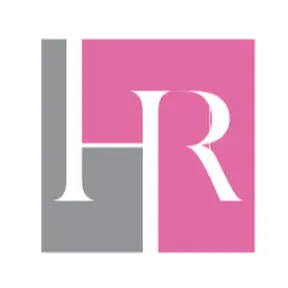
Embark on Your Journey to Exceptional Exhibitions! Contact HR Exhibits Today to Transform Your Vision into Global Success.
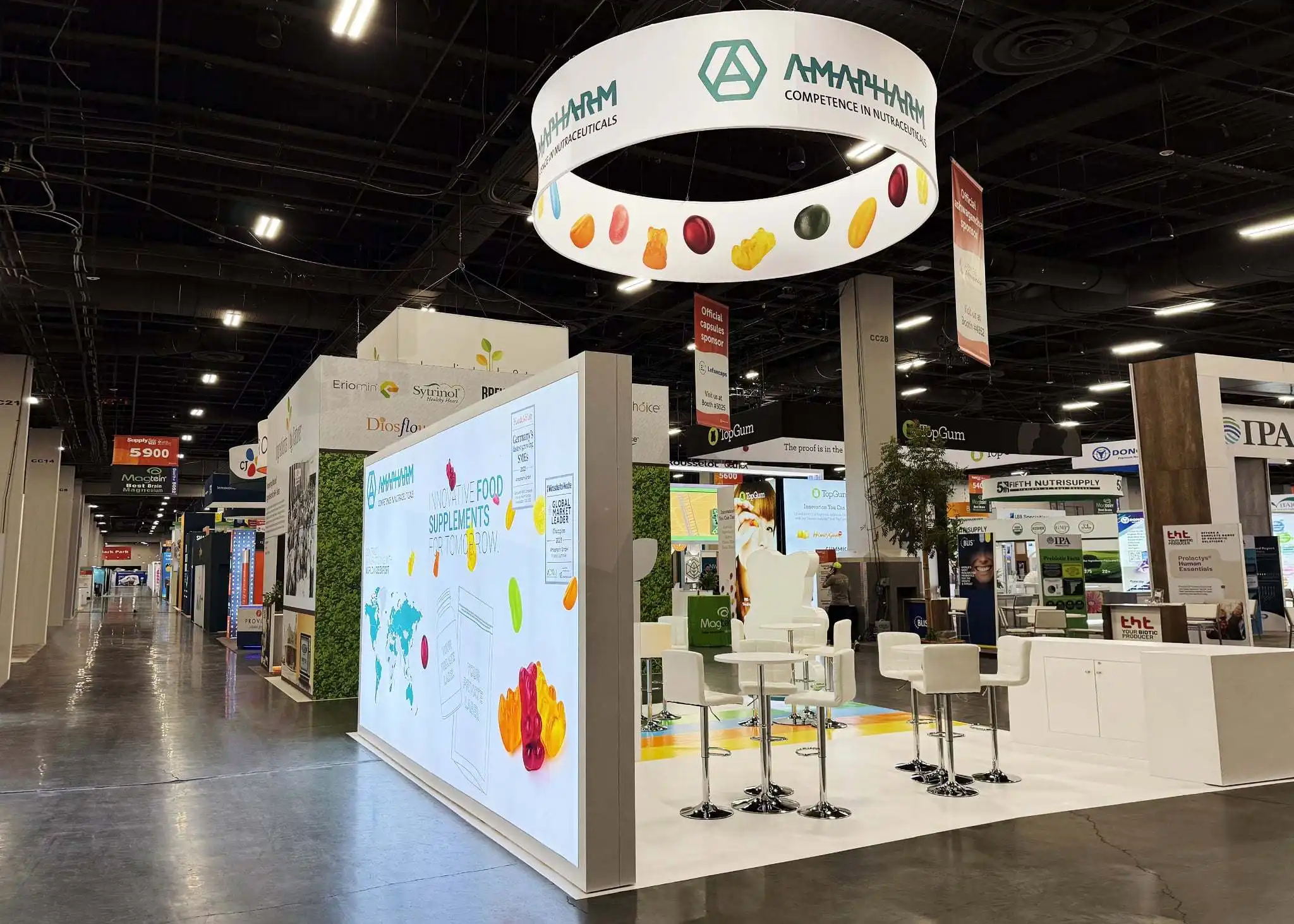
HR Exhibits Service, Inc.
